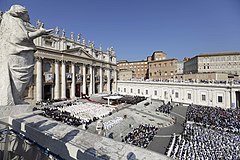
Józef Bilczewski was a Polish Roman Catholic prelate who served as the Archbishop of Lviv from 1900 until his death. He served as a theological and dogmatics professor in the Lviv college after himself having earned two doctorates in the course of his own studies. He earned a reputation as a learned and cultured man; these qualities led to Emperor Franz Joseph I nominating him for the Lviv archdiocese as its head. Pope Leo XIII named him as its archbishop and he set to work prioritizing a range of different pastoral initiatives aimed at revitalizing the faith within people and also prioritizing ecumenical cooperation with other denominations.
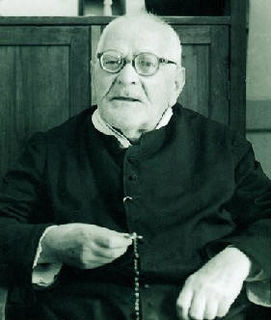
Gaetano Catanoso was an Italian Catholic priest and the founder of the Suore Veroniche del Santo Volto (1934). Catanoso served as a parish priest in two different parishes for his entire ecclesial life and was an ardent devotee of the Face of Jesus which he promoted to the faithful. He also founded the Poor Clerics to encourage vocations to the priesthood while forming the Confraternita del Santo Volto (1920) to spread devotion to the Face of Jesus. He dedicated his pastoral career to bringing the Gospel message to all people and hiked or rode on a mule to reach distant and surrounding mountain villages in order to evangelize to people.

Filippo Smaldone was an Italian Roman Catholic priest and the founder of the Salesian Sisters of the Sacred Hearts. Smaldone is best known for his extensive work with the deaf during his lifetime. Smaldone was a gifted preacher known for his commitment to proper catechesis and to the care of orphans and the mute, which earned him civic recognition.

Vincenzo Romano – born Vincenzo Domenico Romano – was an Italian Roman Catholic priest born in Torre del Greco in Naples. Romano was a parish priest of the village of Herculano who was noted for his simplistic and frugal manner of living and for his great care of orphans. But the French invaders in his area in addition to some of the Italian political groups oppressed him and his work. The people of Torre del Greco granted him the nickname "The Worker Priest" due to Romano's tireless work with the poor and for his commitment to the social needs of all people in the Neapolitan region. He was also noted for his efforts in rebuilding much of Naples following the 1794 eruption of Mount Vesuvius in which he himself cleared rubble and organized rebuilding efforts.
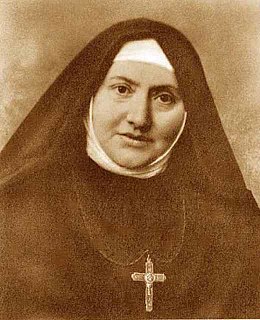
Geltrude Caterina Comensoli, also known as Mother Geltrude is the Patron of Youth, Val Camonica and Relic Custodians. She was the founder of the Institute of the Sacramentine Sisters.
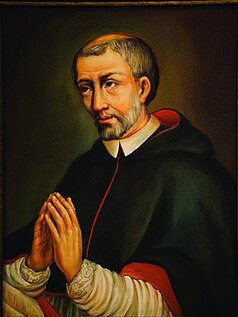
Stanisław Kazimierczyk was a Polish Catholic priest and a professed member of the Canons Regular of the Lateran. He became noted for his ardent devotions to both the Eucharist and to his personal patron saint, Stanislaus of Szczepanów, as well as for his charitable dedication to the ill and poor of Kraków.

Nazaria Ignacia March Mesa – in religious Nazaria of Saint Teresa of Jesus – was a Spanish Roman Catholic professed religious and the founder of the Missionaries of the Crusade. Mesa immigrated from Spain to Mexico where she joined a religious order that saw her minister in Bolivia where she remained for most of her life. She served brief stints in Spain to spread the religious order she founded after she left her own order and relocated to Argentina where she later died.

María del Carmen Sallés y Barangueras – in religious Carmen of Jesus – was a Spanish Roman Catholic professed religious and the founder of the Missionary Sisters of the Immaculate Conception. Sallés is best known for being a strong advocate of both genders being equal and a staunch defender of the rights of women, since she made this the focus of her life from the beginning of her entrance into the religious life.

The cause for the canonization of Pope Paul VI, who died in 1978, commenced in 1993 and he was canonized on 14 October 2018. After having been proclaimed a Servant of God and declared Venerable, he was beatified on 19 October 2014, after the recognition of a miracle had been attributed to his intercession, and declared a saint by Pope Francis on 14 October 2018.
Luca Passi was an Italian priest and the founder of the Teaching Sisters of Saint Dorothy. Two brothers of his were priests – following the example of their paternal uncle – and Passi himself moved to Venice in order to dedicate himself to both his preaching and educational missions.

Domenico Lentini was an Italian Roman Catholic priest. Lentini was ordained as a priest in 1794 and served as a life-long parish priest in his hometown of Potenza where he dedicated himself to promoting Eucharistic devotion and to working alongside the poor of his area. But he also fostered a deep dedication to education and evangelization and often taught parishioners catechism and literature while also making himself available to hear the confessions of penitents.

Vincenzo Grossi was an Italian Roman Catholic priest and the founder of the Daughters of the Oratory.

Manuel Míguez González – in religious Faustino of the Incarnation – was a Spanish priest and a professed member from the Piarists as well as the founder of the Daughters of the Divine Shepherdess – better known as the Calasanzian Institute. He gained a rather strong reputation for being a formidable pastor and a man dedicated to both education and science while using his scientific knowledge to concoct natural medicines to aid the ill who came to him for his help. But his religious activism augmented when he saw illiterate women and those who were marginalized and so decided to establish a religious congregation to educate women.

Lodovico Pavoni was an Italian Roman Catholic priest who administered in Brescia where he lived. He paid close attention to the needs of males and was concerned with their education. He was to establish – in 1825 – his own religious congregation to assist in his mission: the Sons of Mary Immaculate which came to be known also as the "Pavoniani".
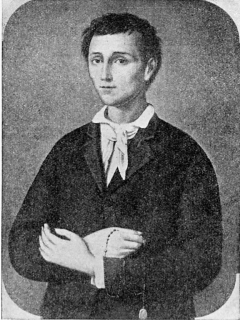
Nunzio Sulprizio was an Italian Roman Catholic from Pescara who worked as an apprentice blacksmith. He suffered from poor health during his brief life and was considered to those who knew him to be a gentle and pious individual.
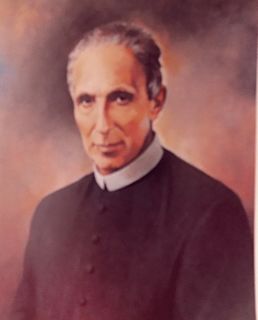
Francesco Maria Greco was an Italian Roman Catholic priest who served in the Archdiocese of Cosenza. Along with Raffaela De Vincentis in 1894, he established the Little Workers of the Sacred Hearts. Greco served as both a pastor and a professor who operated in Cosenza and opened a catechetical school and hospital service for the poor.

Giuditta Vannini – also known as Giuseppina – was an Italian Roman Catholic nun who became a Camillian. Together with Luigi Tezza she established the religious congregation known as the Daughters of Saint Camillus. She and her two siblings were orphaned as children and were placed in different homes; she was raised and educated in Rome under nuns where her vocation to the religious life was strengthened. Vannini later tried joining a religious order but was forced to leave during her novitiate period after suffering from ill health. She and Tezza met in 1891 and founded a religious congregation of which Vannini served as Superior General until her death while Tezza was exiled to Peru around 1900.
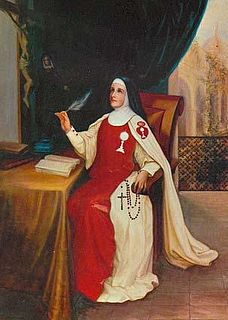
Caterina Sordini was an Italian Roman Catholic professed religious that established the Sisters of Perpetual Adoration, in latin Adoratrices Perpetuae Sanctissimi Sacramenti, devoted to the Eucharist. She assumed the religious name of "Maria Maddalena of the Incarnation" when she became a member of the Third Order of Saint Francis during her adolescence.
Mariano da Roccacasale - born Domenico di Nicolantonio - was an Italian Roman Catholic professed religious from the Order of Friars Minor. He was of peasant stock and entered the order in his twenties as a professed religious rather than as an ordained priest. He was an influence in the decision of Giuseppe Oddi joining the Franciscans after their 1863 encounter.
Giuseppe Antonio Migliavacca – in religious Arsenio da Trigolo – was an Italian Roman Catholic priest and a professed member from the Order of Friars Minor Capuchin. He had been a Jesuit for a period of time before he was forced to withdraw from the order due to a series of complications. Migliavacca founded the Suore di Maria Santissima Consolatrice in 1892 alongside a small group of women who desired to become nuns, but slanderous accusations made against him forced him to abandon it and pursue the Franciscan charism instead; he dealt with these humiliations in private but once a Franciscan became a preacher and confessor and aided the tertiaries of the Third Order of Saint Francis in Bergamo.
